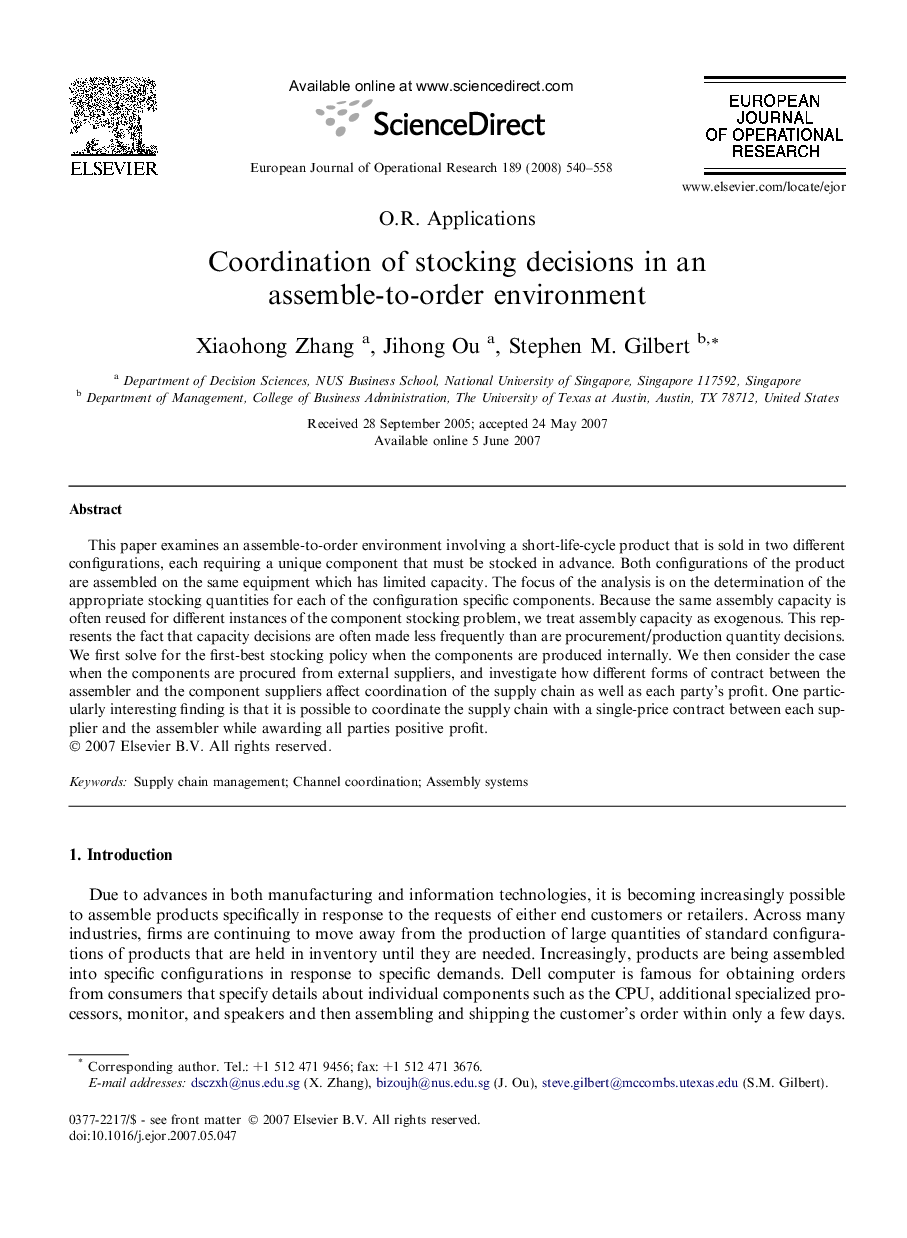| Article ID | Journal | Published Year | Pages | File Type |
|---|---|---|---|---|
| 481412 | European Journal of Operational Research | 2008 | 19 Pages |
This paper examines an assemble-to-order environment involving a short-life-cycle product that is sold in two different configurations, each requiring a unique component that must be stocked in advance. Both configurations of the product are assembled on the same equipment which has limited capacity. The focus of the analysis is on the determination of the appropriate stocking quantities for each of the configuration specific components. Because the same assembly capacity is often reused for different instances of the component stocking problem, we treat assembly capacity as exogenous. This represents the fact that capacity decisions are often made less frequently than are procurement/production quantity decisions. We first solve for the first-best stocking policy when the components are produced internally. We then consider the case when the components are procured from external suppliers, and investigate how different forms of contract between the assembler and the component suppliers affect coordination of the supply chain as well as each party’s profit. One particularly interesting finding is that it is possible to coordinate the supply chain with a single-price contract between each supplier and the assembler while awarding all parties positive profit.
